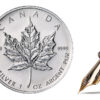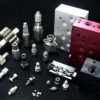Lighting up peppermint, cinnamon or pine-scented candles might sound like a good way to help get in the holiday spirit this year, but you may want to think twice about it.
A new study completed by Irish researchers this month has determined that fumes they release into the air can elevate your chances of getting lung cancer. The risk increases in poorly ventilated spaces.
Asit Kumar Mishra, from University College Cork; and Marie Coggins, a senior lecturer at the University of Galway, detailed their concerning findings in The Conversation on Dec. 4. And before that article was written, they contributed to an extensive air quality study published in the Elsevier journal Indoor Environments.
“Burning candles or incense sticks produces a complex mix of chemicals and particulate matter, including toxic gases like carbon monoxide, sulphur dioxide and oxides of nitrogen,” they explained. The authors say that candles can cause peak fine particle concentrations in a space to rise 15 times higher than the limit set out by the World Health Organization.
Smelly candles can also emit harmful volatile organic compounds (VOCs), which are of particular concern in tight quarters. The researchers pointed out that formaldehyde is one of the most prevalent.
“Concentrations of many VOCs are consistently higher indoors [up to ten times higher] than outdoors,” the U.S. Environmental Protection Agency explained.
The Government of Canada says minimizing usage of scented products, like candles, air fresheners or aerosol deodorizers, will help reduce your exposure significantly.
https://twitter.com/Thekeksociety/status/1732153874641760485
Read more: Breath Diagnostics onboards new president and closes critical financing
Read more: Breath Diagnostics pioneers novel lung cancer breath test
Scented candle market is growing slowly, but hindered by VOC concerns
A March report from the Indian analyst Spherical Insights predicted that the market for aromatic candlesticks would slowly expand with a compound annual growth rate of 4 per cent. Others, like Grand View Research, have made similar assessments.
The slow expansion rate is partially attributable to increasing awareness about the health concerns in discussion.
“Consumers have grown aware of the potential health risks associated with the use of scented candles,” the report explained. “Some scented candles contain hazardous chemicals and VOCs that can provoke allergies and respiratory issues, particularly in sensitive individuals.”
Vanilla is currently the world’s most popular candle scent, according to Statista.
Although certain VOCs can potentially cause lung cancer, they can thankfully be used to help identify the disease too. One American company, Breath Diagnostics Inc., has been fine-tuning a testing device system that can detect biomarkers associated with lung cancer within the VOCs present in a subject’s breath sample.
rowan@mugglehead.com














